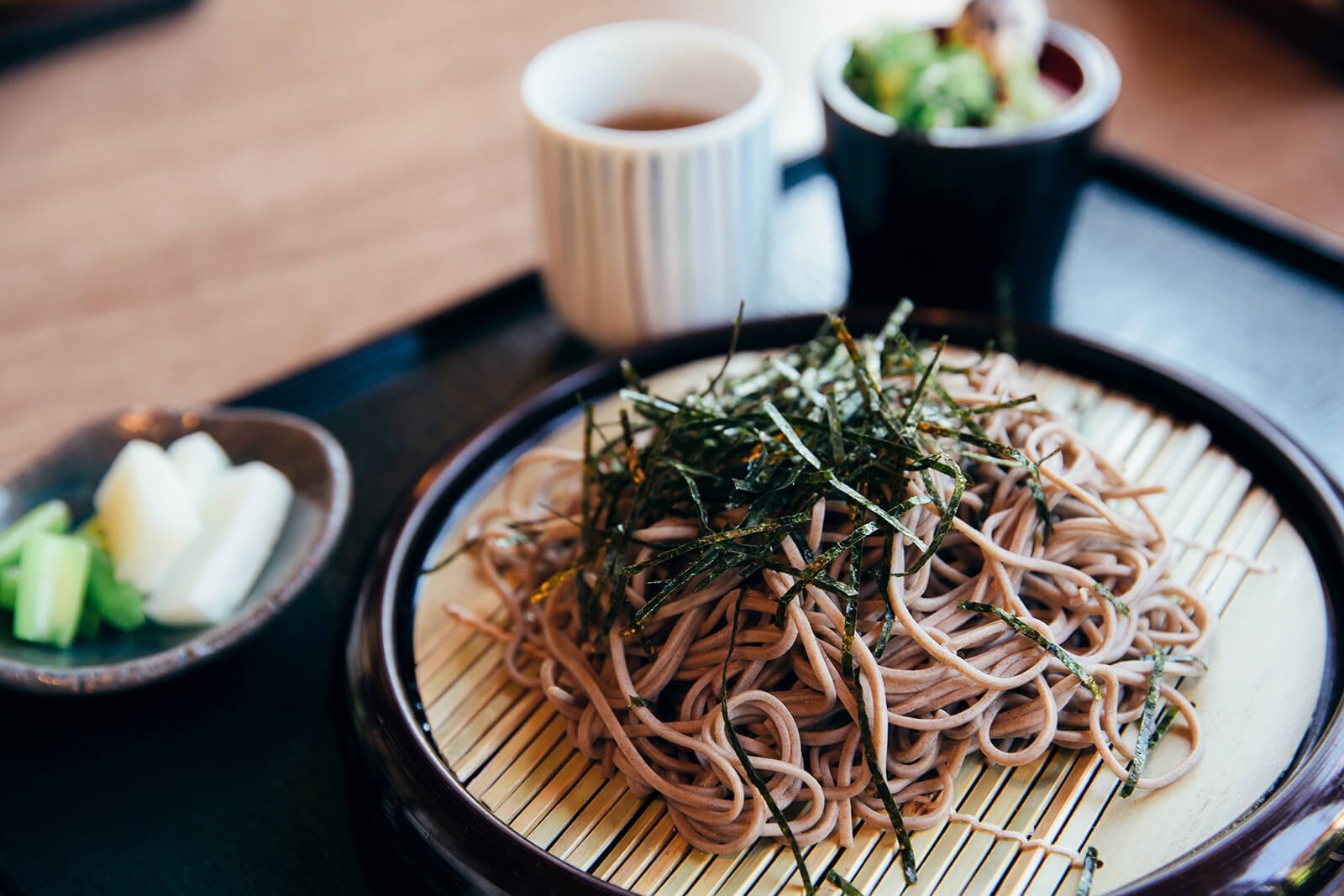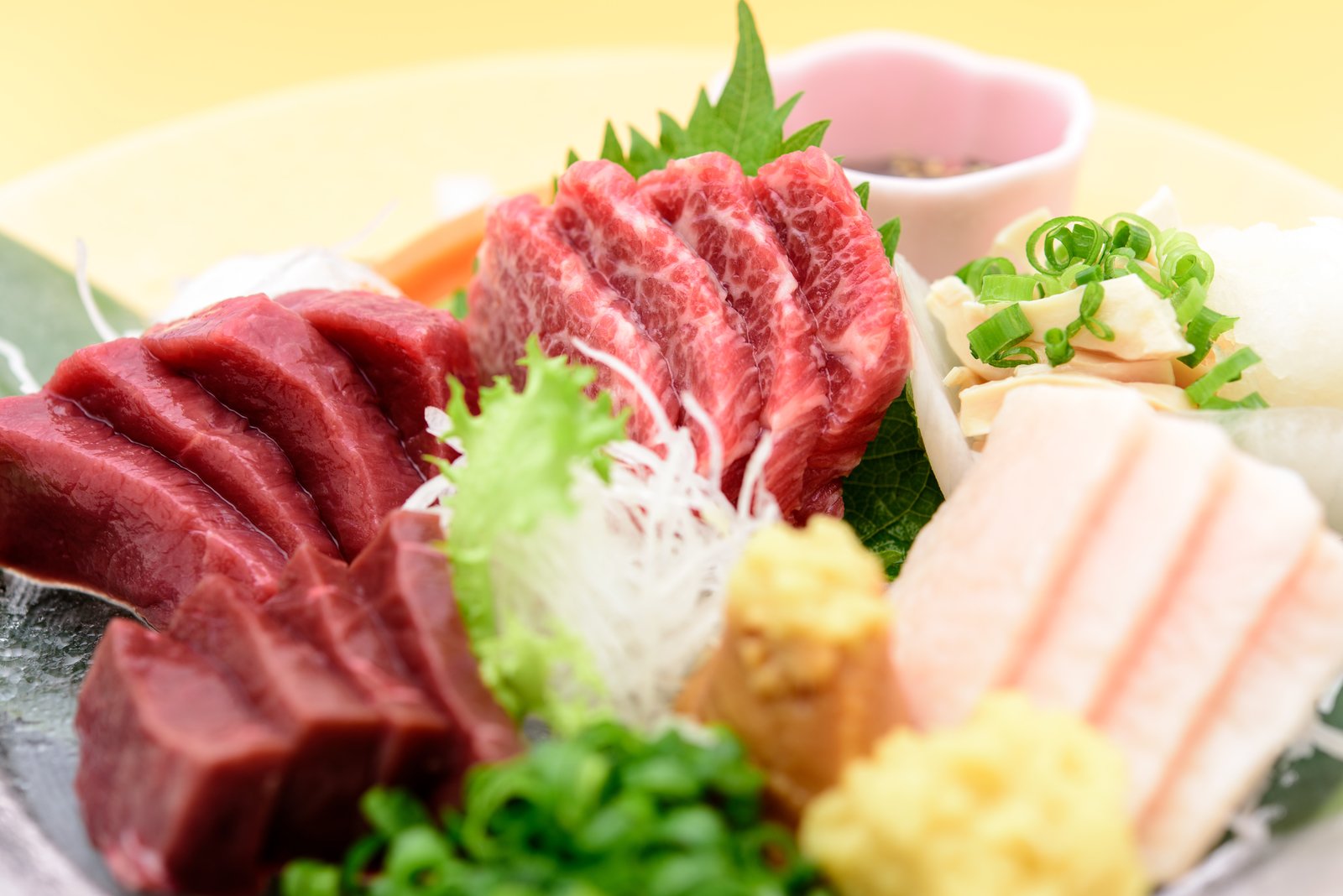All About Soba Noodles
Learn more about soba buckwheat noodles and their many varieties found around Japan and Nagano.
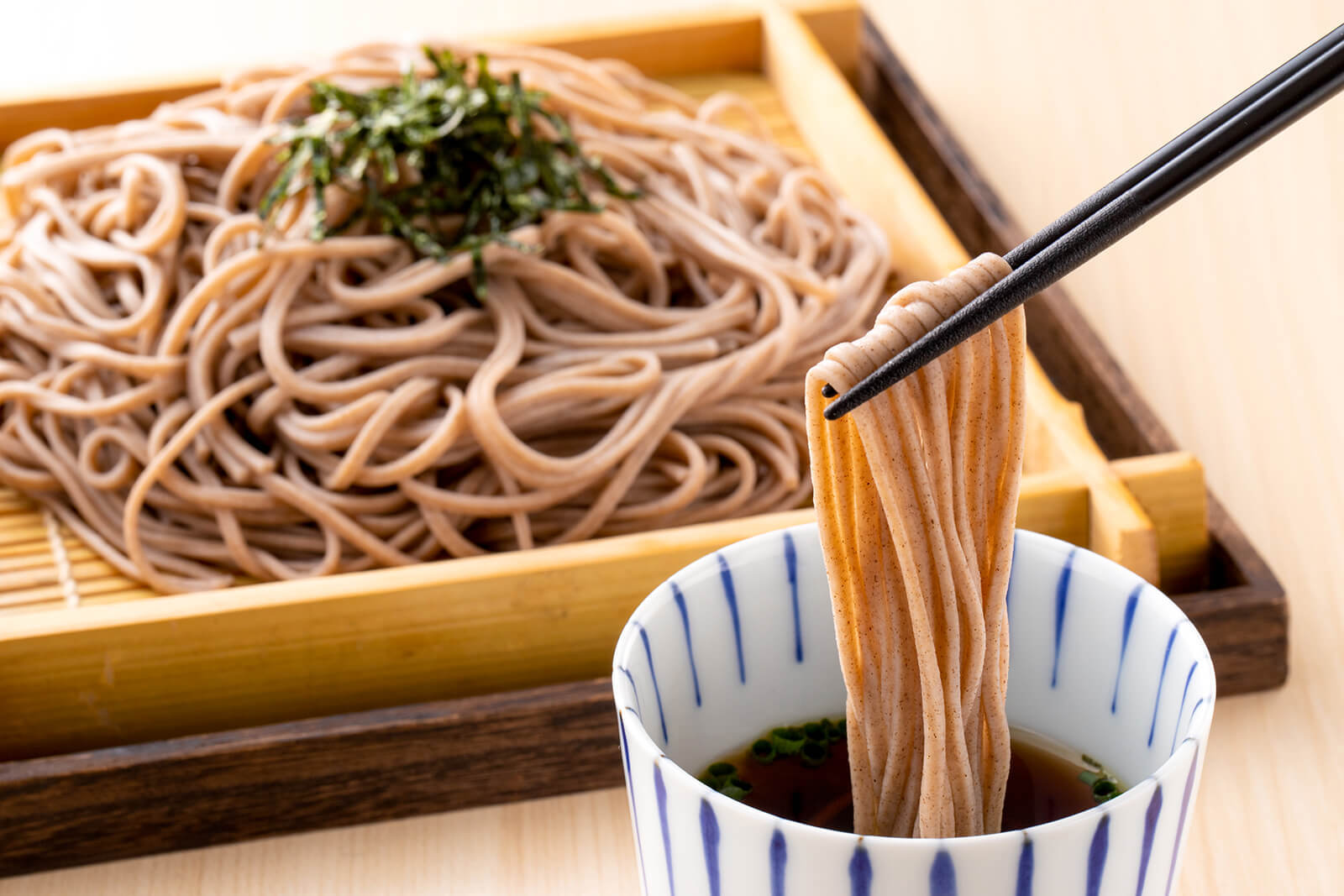
Soba noodles, or Japanese buckwheat noodles, are a popular dish around Japan and are a specialty of Nagano Prefecture, where buckwheat grows in abundance. Served either cold or hot and often together with seasonal toppings and sides, soba noodles are a delicious and healthy meal that can be enjoyed any time of year.
Learn more about soba and its many varieties below!
What’s in Soba Noodles?
.jpg?width=800&height=533&name=50995902162_53d2d09f14_k%20(1).jpg)
Soba noodles are made primarily from buckwheat flour, water and a binding agent such as wheat flour, plant fibers or the starch from potatoes or seaweed. The quality of the buckwheat and the binding agent used can greatly alter the aroma and texture of the noodles. Soba shops most commonly serve nihachi soba, or two-eight soba, referring to the ratio of wheat to buckwheat flour.
Typical Soba Noodle Dishes
They are typically served as mori/zaru soba, kake soba or bukkake soba. Mori soba and zaru soba are cold soba noodles served on a bamboo slotted plate with cold tsuyu broth on the side. Kake soba is soba served in a bowl of heated tsuyu broth. And bukkake soba is soba served in a shallow bowl with cold tsuyu broth on the side, which you pour over the soba when ready to eat.
Toppings may also be added to soba noodles. Sansai soba is topped with wild mountain vegetables; Tororo soba is topped with grated yamaimo or nagaimo yam; and tempura soba is—you guessed it—topped with freshly fried pieces of tempura. You may find other unique toppings as you travel around Japan.
Is Soba Vegan, Vegetarian or Gluten-Free?
While tsuyu broth almost always contains fish (katsuobushi/bonito flakes), soba noodles contain no animal products. Vegans and vegetarians can still enjoy soba noodles as-is or by sprinkling them with salt. The latter is a common way of eating soba after the new harvest.
Soba noodles may also be gluten-free if they are made with 100% buckwheat flour, also known as juwari soba. If the noodles aren’t juwari soba, they most likely contain wheat and are not gluten-free.
How to Eat Soba Noodles
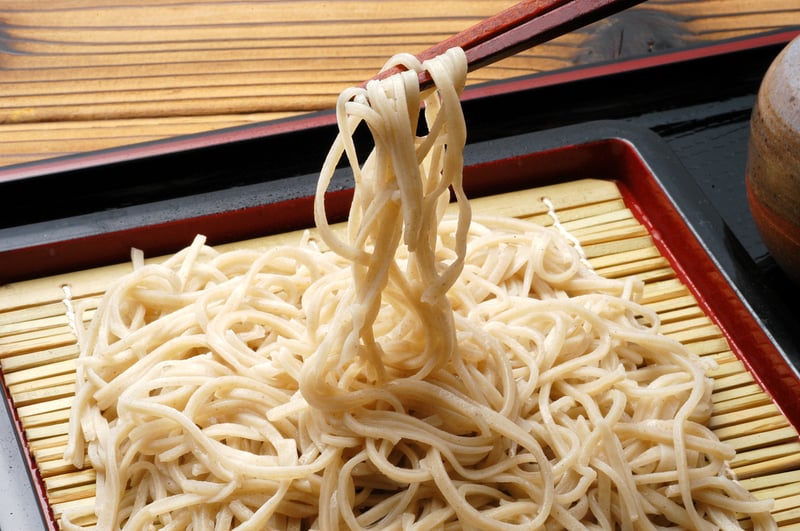
When you receive your plate of soba noodles, you’ll generally be served a bamboo sieve plate with noodles on top, a ceramic cup with tsuyu broth, a small plate of condiments and a pitcher of soba-yu on the side.
Soba noodles are usually dipped in the tsuyu broth before eating, but some soba enthusiasts will eat the noodles as-is or with a pinch of salt. When dipping soba noodles in the broth, it is recommended to hold the cup near your mouth so it’s easier—and less messy—to slurp the noodles up. In Japan, slurping is perfectly acceptable when eating noodles; it’s a sign that you’re enjoying your food.
You may want to add some of the condiments to your tsuyu broth to adjust the taste to your liking. In addition to wasabi, scallions and grated radish, shichimi spice mix is another popular condiment to mix in tsuyu.
After you’ve finished your soba noodles, you’ll be left with some tsuyu broth and a pitcher of soba-yu, the starchy water that the noodles were boiled in. It is common to dilute the tsuyu broth with soba-yu and drink it at the end of your meal.
Where to Eat Soba in Nagano
Whether you’re on a train platform in Tokyo or in a small village in the heart of the Japanese Alps, soba noodles aren’t hard to find. Many regions of Nagano are particularly well known for their soba and offer unique twists on this noodle dish.
Togakushi Soba
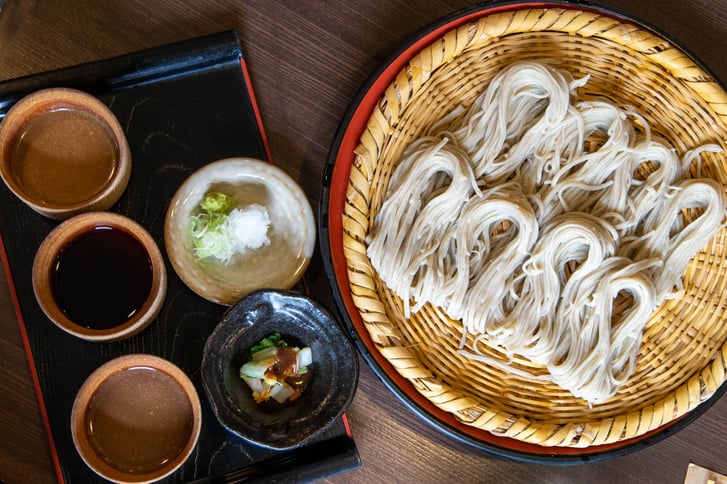
The high altitude of Togakushi made it perfectly suited to grow buckwheat and not much else, so locals had no choice to become skilled soba noodle makers. Once a ration carried by ascetic monks during their pilgrimages in the mountains, Togakushi's soba noodles are now famous throughout Japan. The hallmark of Togakushi soba is its bocchi-mori style of serving. The noodles are placed on the plate in five bundles, said to represent the five shrines of Togakushi.
Takatō Soba
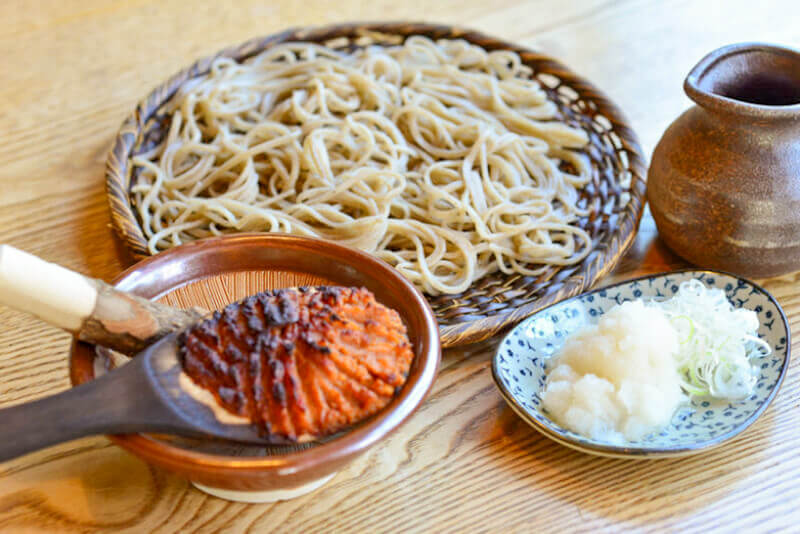
高遠そば by Mko360. Licensed under CC-SA 4.0 via Wikimedia Commons.
The Takatō area of Ina is well known throughout Japan for its breathtaking cherry blossoms in mid-April. But what many people don’t know is that this area is also one of the first places to produce soba noodles, and they have their own style of soba here. In fact, soba was so thoroughly a part of Ina’s culture that there were hardly any soba restaurants at all; families always ate it at home.
Takatō Soba is served with a side of tsuyu and grilled miso paste. The tsuyu is poured over the miso and mixed together, then used as a normal dipping sauce.
Tomikura Soba
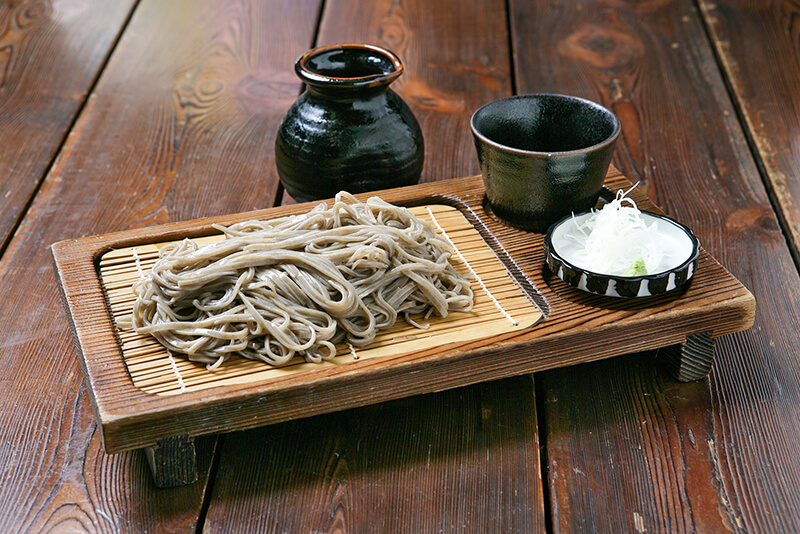
In cold, snowy Iiyama is another kind of Nagano soba. Tomikura soba is made with plant fibers that give the dough incredible strength and elasticity. The dough can be rolled so thin that you can read a newspaper through it. The soba is semi-translucent and has an al dente bite. While trying Tomikura Soba, you can also enjoy Iiyama and neighboring Niigata’s traditional Sasazushi (another vegetarian-friendly snack!).
Tōji Soba
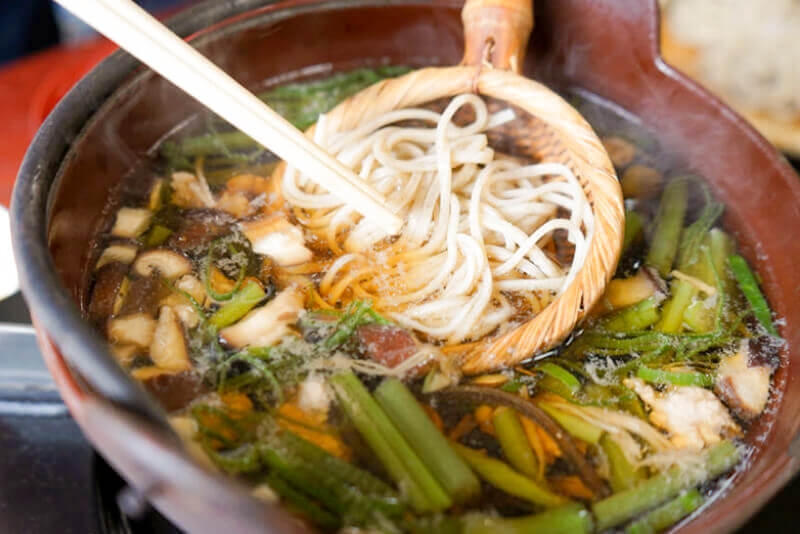
This soba variety is served in areas including Matsumoto, Nagawa and the Kiso Valley. A large nabe pot is filled with tsuyu and seasonal vegetables, then heated. Guests steep their noodles in the broth for a few seconds before eating it together with the pot’s veggies, similar to shabu-shabu. It’s a great soba dish to warm up with in the winter.
Making Your Own Soba Noodles
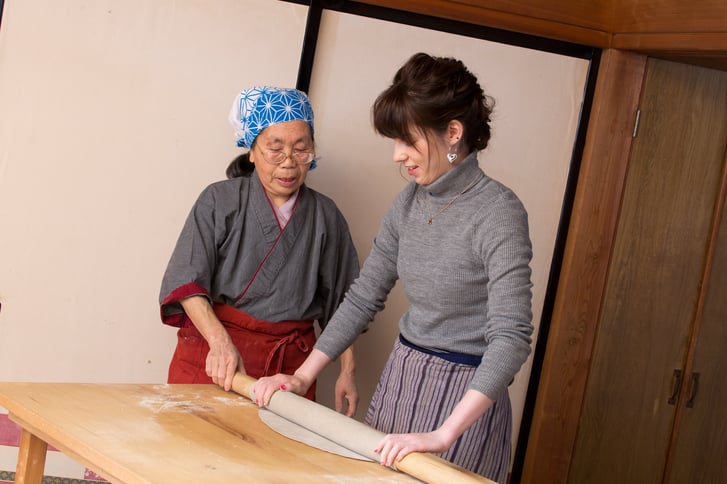
Nothing makes you appreciate soba noodles more than making your own soba noodles. They are not a complicated dish, but they are surprisingly difficult to one to perfect. As a soba noodle master takes you through the steps of mixing, kneading and cutting your noodles, you can appreciate the nutty aroma of buckwheat and the skilled hand required to shape them into uniform strands.
You may not make a beautiful plate of soba on your first try, but they’re certain to be delicious!
Conclusion
Along with sushi and tempura, soba noodles are one of Japan’s representative dishes, and Nagano is known for having some of the most delicious soba noodles around. So while you're in Nagano, be sure to try soba noodles in one of their many forms!

